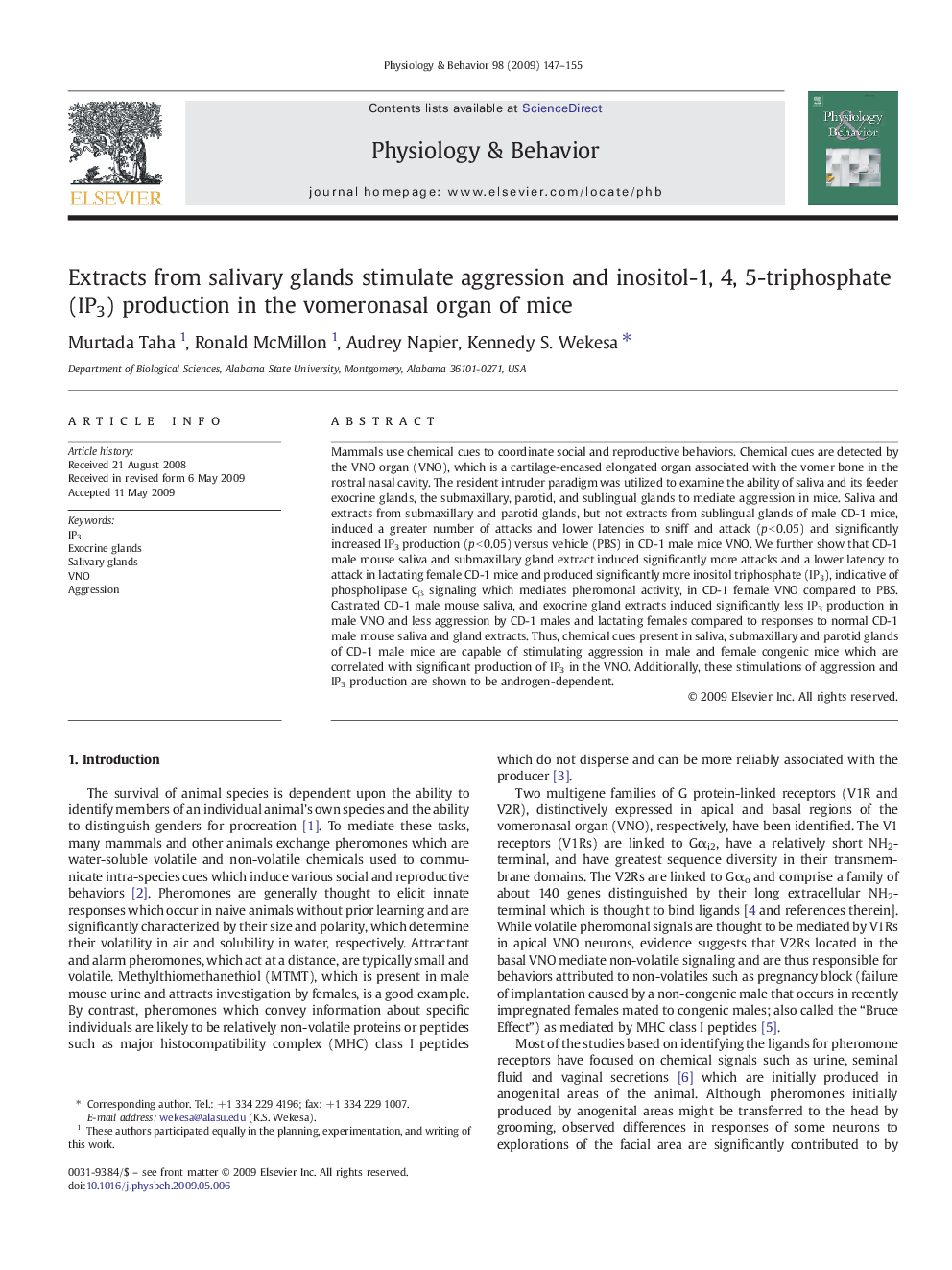| کد مقاله | کد نشریه | سال انتشار | مقاله انگلیسی | نسخه تمام متن |
|---|---|---|---|---|
| 2845462 | 1571209 | 2009 | 9 صفحه PDF | دانلود رایگان |

Mammals use chemical cues to coordinate social and reproductive behaviors. Chemical cues are detected by the VNO organ (VNO), which is a cartilage-encased elongated organ associated with the vomer bone in the rostral nasal cavity. The resident intruder paradigm was utilized to examine the ability of saliva and its feeder exocrine glands, the submaxillary, parotid, and sublingual glands to mediate aggression in mice. Saliva and extracts from submaxillary and parotid glands, but not extracts from sublingual glands of male CD-1 mice, induced a greater number of attacks and lower latencies to sniff and attack (p < 0.05) and significantly increased IP3 production (p < 0.05) versus vehicle (PBS) in CD-1 male mice VNO. We further show that CD-1 male mouse saliva and submaxillary gland extract induced significantly more attacks and a lower latency to attack in lactating female CD-1 mice and produced significantly more inositol triphosphate (IP3), indicative of phospholipase Cβ signaling which mediates pheromonal activity, in CD-1 female VNO compared to PBS. Castrated CD-1 male mouse saliva, and exocrine gland extracts induced significantly less IP3 production in male VNO and less aggression by CD-1 males and lactating females compared to responses to normal CD-1 male mouse saliva and gland extracts. Thus, chemical cues present in saliva, submaxillary and parotid glands of CD-1 male mice are capable of stimulating aggression in male and female congenic mice which are correlated with significant production of IP3 in the VNO. Additionally, these stimulations of aggression and IP3 production are shown to be androgen-dependent.
Journal: Physiology & Behavior - Volume 98, Issues 1–2, 4 August 2009, Pages 147–155